
The Cossacks are a predominantly East Slavic Orthodox Christian people originating in the Pontic–Caspian steppe of eastern Ukraine and southern Russia. Historically, they were a semi-nomadic and semi-militarized people, who, while under the nominal suzerainty of various Eastern European states at the time, were allowed a great degree of self-governance in exchange for military service. Although numerous linguistic and religious groups came together to form the Cossacks, most of them coalesced and became East Slavic-speaking Orthodox Christians.
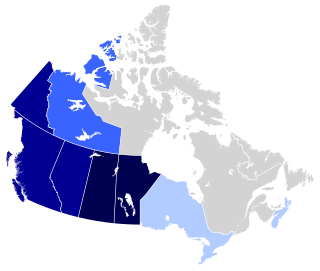
Ukrainian Canadians are Canadian citizens of Ukrainian descent or Ukrainian-born people who immigrated to Canada.

Kuban Cossacks, or Kubanians, are Cossacks who live in the Kuban region of Russia. Most of the Kuban Cossacks are descendants of different major groups of Cossacks who were re-settled to the western Northern Caucasus in the late 18th century. The western part of the region was settled by the Black Sea Cossack Host who were originally the Zaporozhian Cossacks of Ukraine, from 1792. The eastern and southeastern part of the host was previously administered by the Khopyour and Kuban regiments of the Caucasus Line Cossack Host and Don Cossacks, who were re-settled from the Don from 1777.

Green Ukraine, also known as Zelenyi Klyn or Zakytaishchyna, is a historical Ukrainian name for the land in the Russian Far East area between the Amur River and the Pacific Ocean, an area roughly corresponding to Outer Manchuria.

Chyhyryn is a city in Cherkasy Raion, Cherkasy Oblast, central Ukraine. It is located on Tiasmyn river not far where it enters Dnieper.

The United States has a racially and ethnically diverse population. At the federal level, race and ethnicity have been categorized separately. The most recent United States census recognized five racial categories, as well as people who belong to two or more of the racial categories. The United States also recognizes the broader notion of ethnicity. The 2000 census and 2010 American Community Survey inquired about the "ancestry" of residents, while the 2020 census allowed people to enter their "origins". The Census Bureau also classified respondents as either Hispanic or Latino, identifying as an ethnicity, which comprises the minority group in the nation.

Russian Americans are Americans of full or partial Russian ancestry. The term can apply to recent Russian immigrants to the United States, as well as to those who settled in the 19th century Russian possessions in northwestern America. Russian Americans comprise the largest Eastern European and East Slavic population in the U.S., the second-largest Slavic population generally, the nineteenth-largest ancestry group overall, and the eleventh-largest from Europe.
Sotnia was a military unit and administrative division in some Slavic countries.

Anti-Bolshevik Bloc of Nations (ABN) was an international anti-communist organization founded as a coordinating center for anti-communist and nationalist émigré political organizations from Soviet and other socialist countries. The ABN formation dates back to a conference of representatives of non-Russian peoples that took place in November 1943, near Zhytomyr as the Committee of Subjugated Nations/the Anti-Bolshevik Front on the initiative of the Organization of Ukrainian Nationalists. It dissolved in 1996.
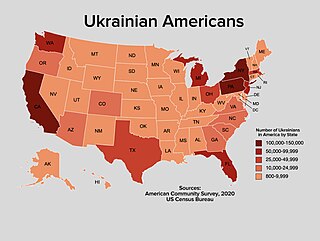
Ukrainian Americans are Americans who are of Ukrainian ancestry. According to U.S. census estimates, in 2021 there were 1,017,586 Americans of Ukrainian descent representing 0.3% of the American population. The Ukrainian population of the United States is thus the second largest outside the former Eastern Bloc; only Canada has a larger Ukrainian community under this definition. According to the 2000 U.S. census, the metropolitan areas with the largest numbers of Ukrainian Americans are: New York City with 160,000; Philadelphia with 60,000; Chicago with 46,000; Detroit with 45,000; Los Angeles with 36,000; Cleveland with 26,000; Sacramento with 20,000; and Indianapolis with 19,000. In 2018, the number of Ukrainian Americans surpassed 1 million.
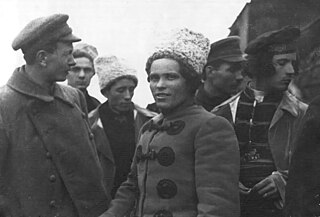
Anarchism in Ukraine has its roots in the democratic and egalitarian organization of the Zaporozhian Cossacks, who inhabited the region up until the 18th century. Philosophical anarchism first emerged from the radical movement during the Ukrainian national revival, finding a literary expression in the works of Mykhailo Drahomanov, who was himself inspired by the libertarian socialism of Pierre-Joseph Proudhon. The spread of populist ideas by the Narodniks also lay the groundwork for the adoption of anarchism by Ukraine's working classes, gaining notable circulation in the Jewish communities of the Pale of Settlement.
The Ukrainians in Kuban in southern Russia constitute a national minority. The region as a whole shares many linguistic, cultural and historic ties with Ukraine. Тhe area where Ukrainians live in Kuban is sometimes unofficially referred to as Raspberry Ukraine or Malynovyi Klyn.
Demographics of North Carolina covers the varieties of ethnic groups who reside in North Carolina and relevant trends.
Moldovan Americans are Americans who are from Moldova or are descended from Moldovans. According to the U.S. 2000 census, there were 7,859 Moldovan Americans in the United States. The American Community Survey indicated that the number born in Moldova greatly increased over the years, and in 2014 exceeded 40,000 people in the United States. Most Moldovan Americans are Eastern Orthodox.
Multiracial Americans or mixed-race Americans are Americans who have mixed ancestry of two or more races. The term may also include Americans of mixed-race ancestry who self-identify with just one group culturally and socially. In the 2020 United States census, 33.8 million individuals or 10.2% of the population, self-identified as multiracial. There is evidence that an accounting by genetic ancestry would produce a higher number.
American ancestry refers to people in the United States who self-identify their ancestral origin or descent as "American", rather than the more common officially recognized racial and ethnic groups that make up the bulk of the American people. The majority of these respondents are visibly White Americans, who are far removed from and no longer self-identify with their original ethnic ancestral origins. The latter response is attributed to a multitude of generational distance from ancestral lineages, and these tend be Anglo-Americans of English, Scotch-Irish, Welsh, Scottish or other British ancestries, as demographers have observed that those ancestries tend to be recently undercounted in U.S. Census Bureau American Community Survey ancestry self-reporting estimates.
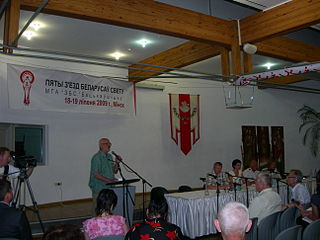
The Belarusian diaspora refers to emigrants from the territory of Belarus as well as to their descendants.

Palestinian Americans are Americans who are of full or partial Palestinian descent. It is unclear when the first Palestinian immigrants arrived in the United States, but it is believed that they arrived during the early 1900s.

Free Cossacks were Ukrainian Cossacks that were organized as volunteer militia units in the spring of 1917 in the Ukrainian People's Republic. The Free Cossacks are seen as precursors of the modern Ukrainian national law enforcement organizations such as the National Guard of Ukraine or the Internal Troops of Ukraine.
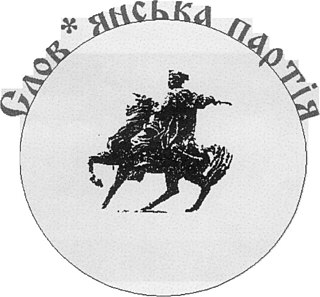
Slavic Party is a political party of Ukraine, previously known as Civil Congress of Ukraine.












